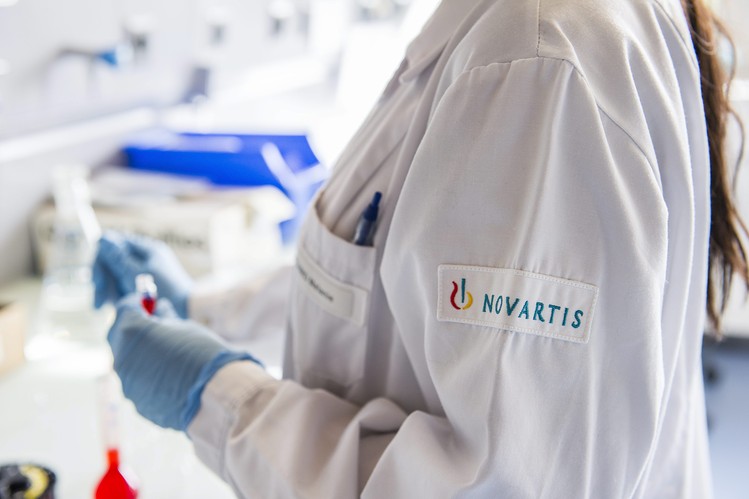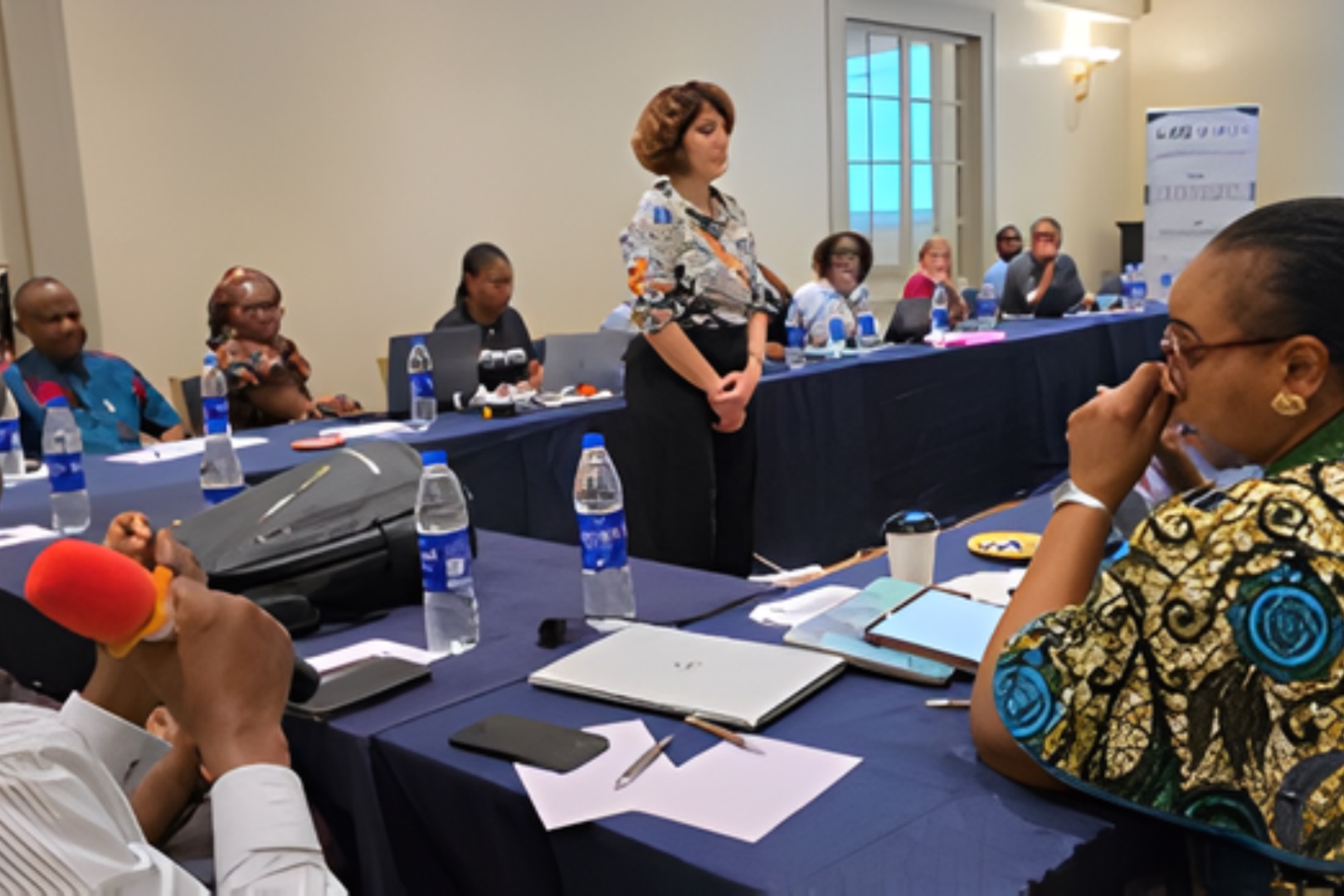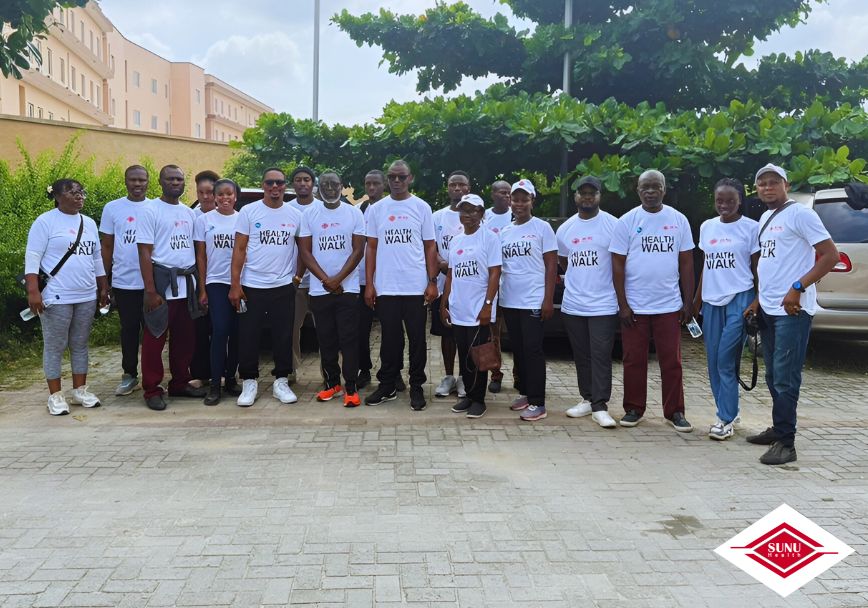Health
Novartis to Invest $100m to Research, Develop New Antimalarials

By Modupe Gbadeyanka
The management of Novartis has announced a five-year commitment to the fight against malaria in conjunction with the 7th Multilateral Initiative on Malaria Conference and the Malaria Summit of the Commonwealth Heads of Government meeting.
Further, the company has released new African research on progress and remaining challenges toward the 2030 malaria elimination targets, together with Elimination 8 and the KEMRI-Wellcome Trust program.
Over the next five years, as part of its commitment, Novartis will invest more than $100 million to advance research and development of next-generation treatments to combat emerging resistance to artemisinin and other currently used antimalarials.
The company will also implement an equitable pricing strategy to maximize patient access in malaria-endemic countries when these new treatments become available.
In order to contribute to the WHO’s target of reducing malaria-related child mortality by at least 90 percent by 2030, Novartis will further help expand access to pediatric antimalarials and implement healthcare system strengthening programs in 4 sub-Saharan countries.
“Resistance to treatment presents the biggest threat to the incredible progress that has been made in the fight against malaria in the past 20 years. We cannot afford to wait; this is why we are committing to advance the research and development of next-generation treatments,” said Vas Narasimhan, CEO of Novartis. “At the same time, we need to work to ensure that our innovation reaches those most in need, even those in the most remote locations.”
The R&D investment is meant to advance the Novartis malaria pipeline through 2023 and to complete a comprehensive global clinical trial program for our novel antimalarial drug candidates KAF156 and KAE609 (currently in Phase IIb and Phase IIa respectively). Both are from new classes of medicines that were selected for their ability to treat malaria in different ways from current therapies. The investment also includes new uses of technology to identify areas where the malaria burden is greatest. This information could then be used to support capability- and capacity-building to establish future clinical trial sites, so the medicines can be evaluated in the populations where they are most needed.
In order to enable patients in malaria-endemic countries to afford these new treatments once they become available, the company will implement an equitable pricing strategy based on socio-economic conditions of different population segments. We plan to do so in consultation with our development and funding partners and other stakeholders.
Despite the tremendous progress made in combating malaria, one child still dies from the disease every two minutes. Novartis aims to contribute to the WHO’s target of reducing malaria-related child mortality by at least 90 percent in 2030. In Nigeria, the Democratic Republic of Congo and at least two more countries in sub-Saharan Africa that bear the highest number of malaria-related child deaths, we plan to work with partners to help expand access to our paediatric artemisinin-based combination therapy (ACT) and drive integrated community case management (iCCM) initiatives.
iCCM is recognized as a key strategy for increasing access to essential treatments and reducing child mortality from treatable conditions, such as malaria, pneumonia and diarrhoea.
Novartis has been committed to the fight against malaria for the past two decades, launching the first fixed-dose ACT in 1999 and the first dispersible paediatric ACT developed in partnership with Medicines for Malaria Venture (MMV) in 2009.
To date, working with partners, the company has delivered more than 850 million treatments, including 350 million paediatric treatments, without profit to malaria-endemic countries.
The new commitment launches at the same time as results from a new research study (Malaria Futures for Africa, MalaFA) across 14 countries in sub-Saharan Africa.
In total, 68 African experts from governments, the research community and nongovernmental organizations expressed their views on progress and remaining challenges toward the 2030 global malaria elimination targets.
Global malaria deaths have fallen by more than 60 percent between 2000 and 2015. Yet respondents fear progress could stall unless national governments provide more funding and international organizations target their support more effectively.
Many experts also voiced concerns that mosquitoes were increasingly resistant to insecticides and that malaria parasites could become resistant to ACTs in the next 15-20 years. Some feared that resistance would spread faster because of expanding trade and travel between Africa and Asia, where the first signs of drug resistance are emerging. Others thought it was just as likely that resistance could emerge independently in Africa.
Respondents expressed widespread support for making better use of the currently available tools, while stressing that more emphasis should be placed on improving the delivery of existing and new interventions to fight malaria – an area currently underfunded.
The MalaFA study was commissioned by Novartis and co-chaired by Dr Richard Kamwi, Ambassador, Elimination 8 (E8), and Professor Bob Snow, of the KEMRI-Wellcome Trust program, Kenya and University of Oxford, United Kingdom. Research advisers include Roll Back Malaria, Malaria No More UK and the African Leaders Malaria Alliance.
According to the 2017 World Malaria Report, there were 216 million cases of malaria in 2016, up from 211 million cases in 2015. The number of malaria deaths was 445,000 in 2016 vs. 438,000 in 2015. Ninety percent of malaria cases and over 90 percent of malaria deaths occur in sub-Saharan Africa. Children under 5 are particularly at risk, and malaria takes the life of a child every two minutes.
Health
SUNU Health Named Most Customer Focused HMO of the Year

By Modupe Gbadeyanka
The decision of the management of SUNU Health Nigeria Limited to adopt the strategy of placing the enrollee and customer at the heart of its operations has started to pay off.
The company was recently announced as Most Customer-Focused Health Insurance Company of the Year at the Customer Service Standard Magazine Awards 2025.
The recognition underscored the company’s success in translating its dedication into tangible enrollee satisfaction and superior market service at the Nigerian Health Maintenance Organisation (HMO) landscape.
It also highlights the organisation’s dedicated efforts in streamlining claims processing, enhancing access to quality healthcare providers, and maintaining transparent, responsive communication channels with its diverse client base across Nigeria.
The accolade further serves as a powerful testament to the successful integration of digital solutions and human-centric service models at SUNU Health.
It positions the firm as a leader not only in providing robust health plans but also in delivering the supportive, personalized care that enrollees truly value.
“Clinching the Most Customer-Focused Health Insurance Company of the Year award is not just an honour; it is a validation of the core philosophy that drives every member of the SUNU Health team.
“We believe that healthcare is fundamentally a service industry, and our success is measured by the well-being and satisfaction of our enrollees,” the chief executive of SUNU Health, Mr Patrick Korie, commented.
“This award reinforces our resolve to continuously innovate and set new benchmarks for customer experience in the Nigerian health insurance sector.
“Our commitment to providing accessible, high-quality, and seamless healthcare solutions remains our top priority as we move into the new year (2026),” he added.
Health
Nigeria Launches First National Antimicrobial Resistance Survey

By Adedapo Adesanya
Nigeria has launched its first nationally representative survey on antimicrobial resistance to generate critical data to guide evidence-based policies, improve patient outcomes, and strengthen health system resilience.
Antimicrobial resistance occurs when bacteria, viruses, fungi, and parasites evolve to resist treatment, making infections harder to cure.
As a result, surveillance is essential to track resistance patterns, identify priority pathogens, and guide targeted interventions and with support from the World Health Organization (WHO) and other partners, the initiative marks a milestone in the country’s public health response.
Nigeria becomes the third country globally to partner with WHO on a national antimicrobial resistance survey. having been selected based on the country’s strong commitment to AMR surveillance, its updated WHO Nigeria NAP 2.0, and readiness to expand laboratory and data systems.
Africa’s most populous country ranks 20th globally for age-standardized mortality due to antimicrobial resistance . In 2019, an estimated 263,400 deaths in Nigeria were linked to it—more than the combined deaths from enteric infections, tuberculosis, respiratory infections, maternal and neonatal disorders, neglected tropical diseases, malaria, and cardiovascular diseases.
Globally, resistant infections in tertiary care settings cost between $2,371 and $29,289 per patient episode, extend hospital stays by an average of 7.4 days, and increase mortality risk by 84 per cent.
The survey will see the establishment of a national baseline on antimicrobial resistance prevalence to monitor interventions, assess the distribution, burden (morbidity, mortality, DALYs, cost), and diversity of AMR across regions and populations, as well as contribute to the global target of reducing AMR deaths by 10 per cent by 2030, in line with the political declaration endorsed at the 79th United Nations General Assembly in 2024.
It also seeks to strengthen routine antimicrobial resistance surveillance, including diagnostics, sample referral systems, and laboratory capacity.
Using WHO’s standardized methodology, the survey will run for 12–15 months and cover 40–45 randomly selected health facilities nationwide. Patients with suspected bloodstream infections (BSIs) will be identified using standard case definitions, and blood samples will be analysed in quality-assured laboratories.
Data will be collected across all age groups, covering clinical, demographic, laboratory, financial, and outcome indicators. Follow-up will occur at discharge, 28 days, and three months post-infection. The survey will sample approximately 35,000 patients suspected of BSIs to obtain around 800 isolates of the most common pathogens.
Dr Tochi Okwor, Acting Head, Disease Prevention and Health Promotion, Nigeria Centre for Disease Control and Prevention (NCDC) said, “With WHO’s support, we are confident the survey will generate the evidence needed to protect public health.”
WHO Representative in Nigeria, Dr Pavel Ursu, reaffirmed WHO’s commitment stating that ,“Nigeria is taking a decisive step toward combating AMR with an approach grounded in data, science, and measurable impact. This survey will provide the clarity needed to drive smarter policies, stronger surveillance, and better patient outcomes. Nigeria is laying the foundations for a resilient health system, one that protects lives, strengthens trust, and ensures that essential medicines remain effective for future generations.”
Adding her input, Dr Laetitia Gahimbare, Technical Officer at WHO Regional Office for Africa, added:“Strengthening surveillance enhances Nigeria’s capacity to detect and respond to AMR threats, supporting better patient outcomes, reinforcing health security, and building a resilient system.”
Professor Babatunde Ogunbosi, Paediatric Infectious Diseases Specialist at University College Hospital, Ibadan, highlighted the broader impact:, “This survey is about more than data. It’s about building national capacity for research, diagnostics, and policy. It integrates science into public health decision-making.”
Health
Our Vision Extends Beyond Offering Health Insurance Packages—SUNU Health

By Modupe Gbadeyanka
One of the leading Health Maintenance Organisations (HMOs) in Nigeria, SUNU Health, has said its philosophy is proactive wellness, noting that this was why it recently partnered with The Divine Physician and St. Luke Catholic Chaplaincy Centre for a community health initiative.
The chief executive of the company, Dr Patrick Korie, said, “SUNU Health’s vision extends far beyond merely offering health packages and insurance.”
“We are fundamentally interested in proactive wellness—preventing illness rather than just treating it. This annual exercise is a crucial part of that commitment, and we will continue to champion it for as long as we exist,” he stressed.
The medical practitioner led the company’s annual Health Walk in Lagos on Saturday, November 8, 2025. The event drew hundreds of health enthusiasts, including the Chaplain of the centre, Rev Fr. John Okoria SJ.
His active participation reinforced the spiritual and moral commitment to holistic well-being, proving crucial in mobilizing staff and community members, thereby ensuring the vital wellness message reached a broad and deeply engaged audience.
The health walk covered several major streets in Lagos, starting from Ishaga Road and navigating through Itire Road, Randle Avenue, Akerele, Ogunlana Drive, and Workers Street before concluding back at the starting point. Following the vigorous walk, participants engaged in a session of high-energy aerobics and other outdoor exercises, reinforcing the day’s focus on fitness.
“We are delighted to champion this vital health initiative alongside the Catholic Chaplaincy Centre LUTH/CMUL. The turnout was truly delightful, reflecting the community’s deep desire to embrace wellness.
“Collaborations like this amplify our message and commitment to the Nigerian community,” the Brand and Corporate Communications Lead at SUNU Health, Mr Samuel Olayemi, stated.
-

 Feature/OPED6 years ago
Feature/OPED6 years agoDavos was Different this year
-
Travel/Tourism9 years ago
Lagos Seals Western Lodge Hotel In Ikorodu
-

 Showbiz3 years ago
Showbiz3 years agoEstranged Lover Releases Videos of Empress Njamah Bathing
-

 Banking8 years ago
Banking8 years agoSort Codes of GTBank Branches in Nigeria
-

 Economy3 years ago
Economy3 years agoSubsidy Removal: CNG at N130 Per Litre Cheaper Than Petrol—IPMAN
-

 Banking3 years ago
Banking3 years agoFirst Bank Announces Planned Downtime
-

 Banking3 years ago
Banking3 years agoSort Codes of UBA Branches in Nigeria
-

 Sports3 years ago
Sports3 years agoHighest Paid Nigerian Footballer – How Much Do Nigerian Footballers Earn













